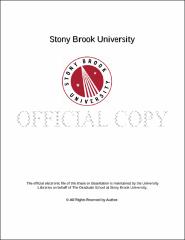| dc.identifier.uri | http://hdl.handle.net/11401/77427 | |
| dc.description.sponsorship | This work is sponsored by the Stony Brook University Graduate School in compliance with the requirements for completion of degree. | en_US |
| dc.format | Monograph | |
| dc.format.medium | Electronic Resource | en_US |
| dc.language.iso | en_US | |
| dc.publisher | The Graduate School, Stony Brook University: Stony Brook, NY. | |
| dc.type | Dissertation | |
| dcterms.abstract | This dissertation studies and compares the individual and household Labor Supply Curves (LSCs) of a developing Mexican versus a developed American economy. In the individual case, our results suggest that regardless of the underlying assumption of heterogeneous or homogeneous units of labor -that is, disaggregating or not the labor market by levels of education-, the individual American and Mexican LSCs exhibit a backward bending (inverted C) and a forward falling (C) shapes respectively, implying the existence of a survival constraint at very low wages, not observed in the more developed American economy. Considering both economies together, an international inverted S LSC is observed. In the household case, our results suggest once again that, regardless of the underlying assumption of heterogeneous or homogeneous units of labor, the observed American and Mexican household LSCs present a backward bending and a forward falling shapes respectively. However, if a cubic functional form is allowed in the Mexican case, an inverted S shape is also supported by the data. We propose a theoretical static structural model consistent with the empirical behavior described above. It constitutes the first model able to replicate in a household framework all the aforementioned shapes. The model can be collapsed into an individual framework, where a set of special cases comprises the simplest models in the economic literature able to generate backward bending and forward falling LSCs. All of them have a close form solution. These models demonstrate that the agents' behavior underlying the abovesaid LSC shapes constitutes an optimal response in the absence or presence of a survival constraint. Additionally, we propose an alternative way of analyzing the labor market, by presenting a moving average of the locus of equilibria by deciles of wages. Our results have non-trivial economic policy implications on the optimal minimum wage and public education - poverty cycles in the Mexican economy. They also affect the optimal labor-income tax policy in the American economy. | |
| dcterms.available | 2017-09-20T16:52:40Z | |
| dcterms.contributor | Sanderson, Warren | en_US |
| dcterms.contributor | Rendon, Silvio | en_US |
| dcterms.contributor | Benitez-Silva, Hugo | en_US |
| dcterms.contributor | Yin, Na. | en_US |
| dcterms.creator | Mendoza, Jacques Lartigue | |
| dcterms.dateAccepted | 2017-09-20T16:52:40Z | |
| dcterms.dateSubmitted | 2017-09-20T16:52:40Z | |
| dcterms.description | Department of Economics. | en_US |
| dcterms.extent | 103 pg. | en_US |
| dcterms.format | Monograph | |
| dcterms.format | Application/PDF | en_US |
| dcterms.identifier | http://hdl.handle.net/11401/77427 | |
| dcterms.issued | 2015-08-01 | |
| dcterms.language | en_US | |
| dcterms.provenance | Made available in DSpace on 2017-09-20T16:52:40Z (GMT). No. of bitstreams: 1
Mendoza_grad.sunysb_0771E_12045.pdf: 1263688 bytes, checksum: d4be55f20b4b98646d9f1f9c540c7d47 (MD5)
Previous issue date: 2014 | en |
| dcterms.publisher | The Graduate School, Stony Brook University: Stony Brook, NY. | |
| dcterms.subject | Economics, Labor | |
| dcterms.title | Backward Bending, Forward Falling, and Inverted S Labor Supply Curves: US and Mexico | |
| dcterms.type | Dissertation | |

